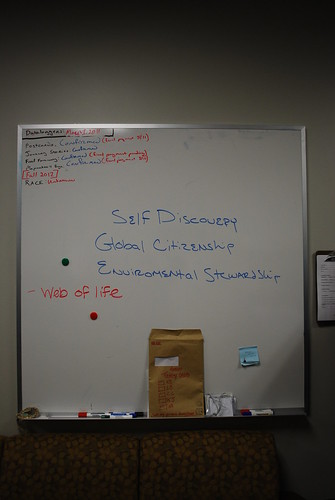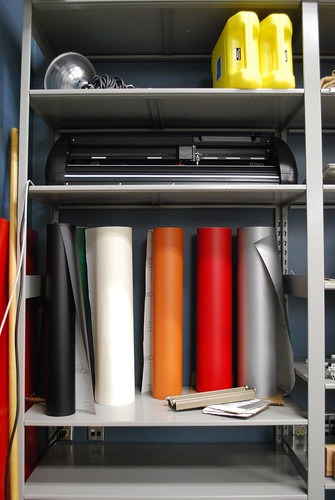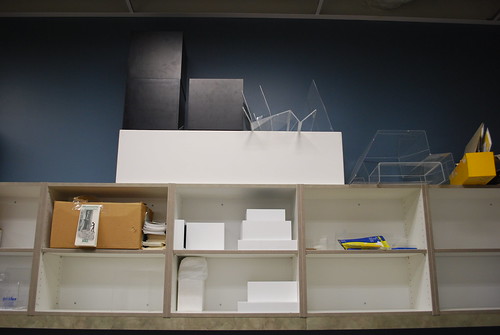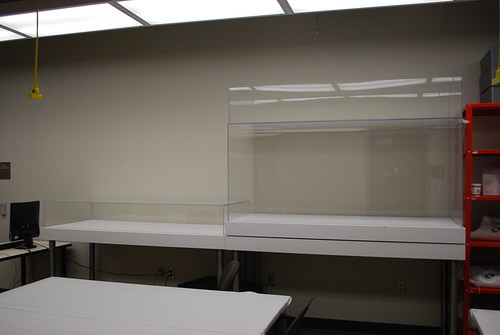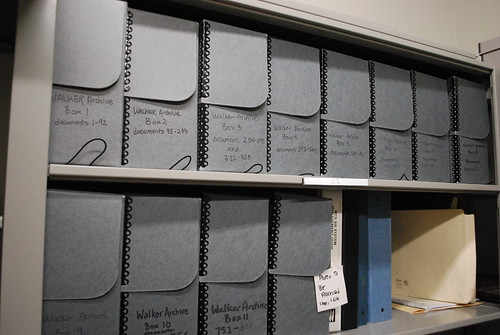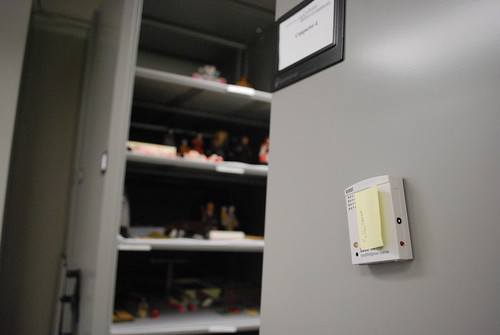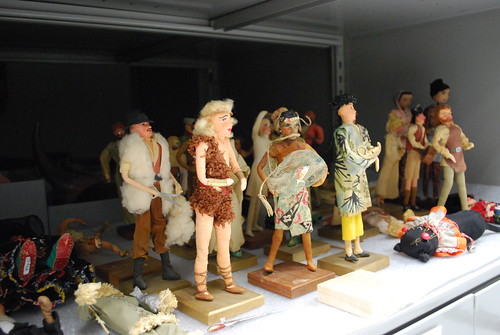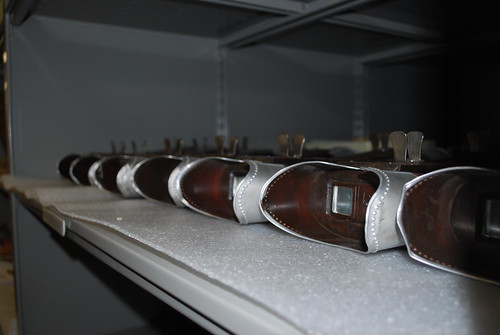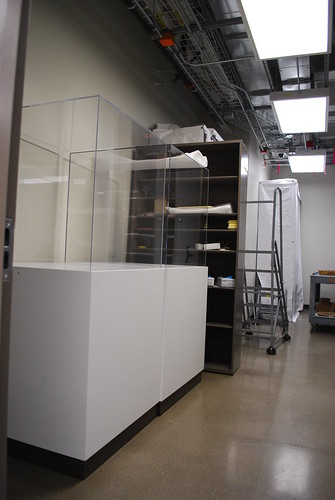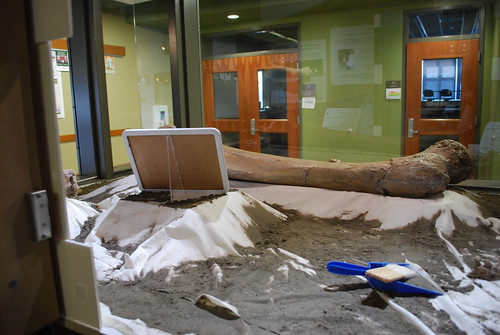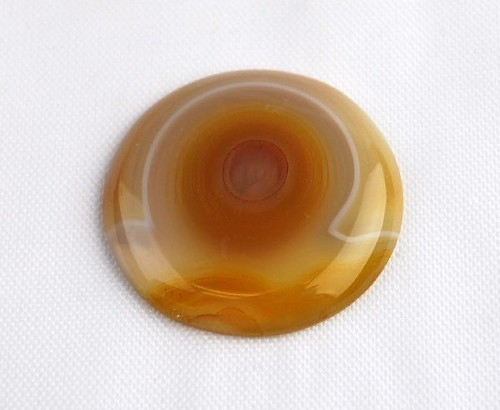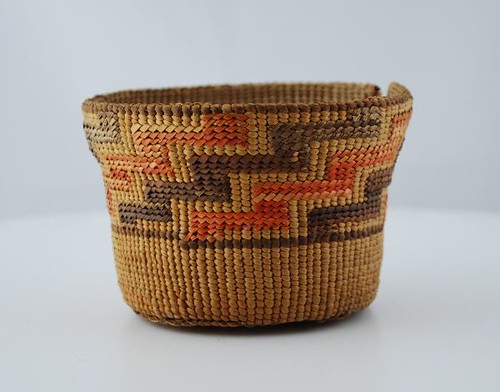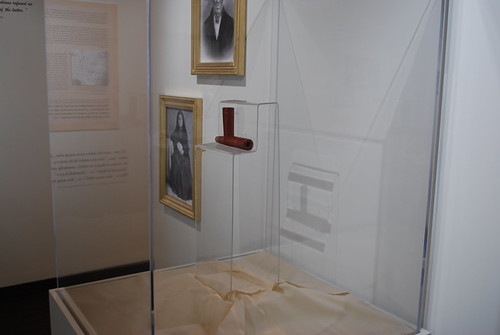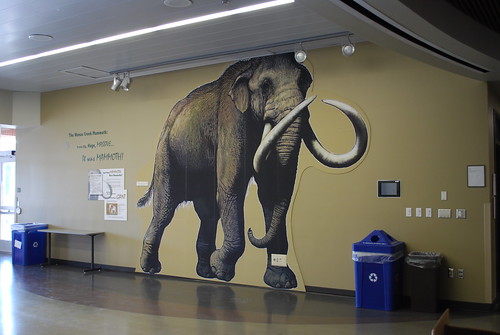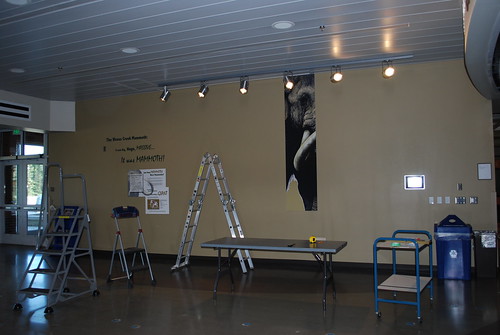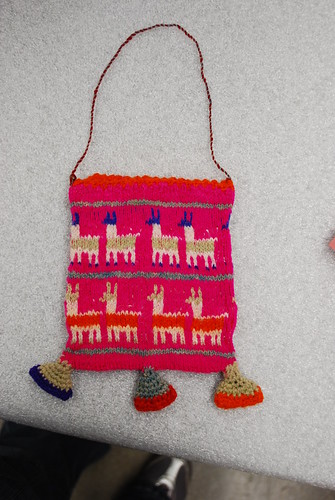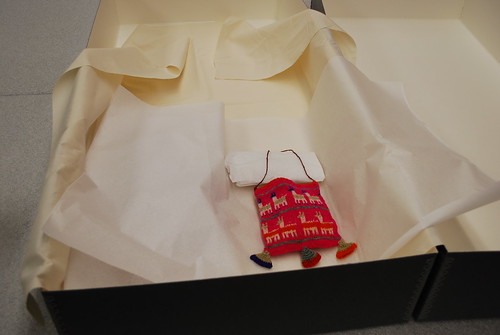My goal for the course was to teach the students practical fundamentals, and what better way to do that than with hands on projects? The basket collection was an immediate candidate. The baskets are beautiful and likely to be handled frequently for exhibit and research. The students were tasked with a four part assignment: Complete a catalog form, a condition report, rehouse and support the basket, and enter the information they gathered into the museum database.
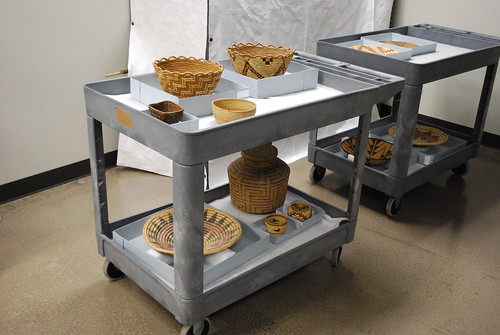
The rehoused baskets on carts.
All students were required to make a custom sized box from archival cardboard and support the basket if necessary. Many of the baskets chosen for the project are wide, shallow baskets for which we needed to construct supports to help prevent the sides from slumping. Gravity is a mighty foe which must be fought with….

…custom carved blocks of ethafoam.
Carving foam to match the curve of a basket proved to be a very tricky proposition, but the students were up to the task. Not all baskets required such specific mounts. Some were fine without external supports.
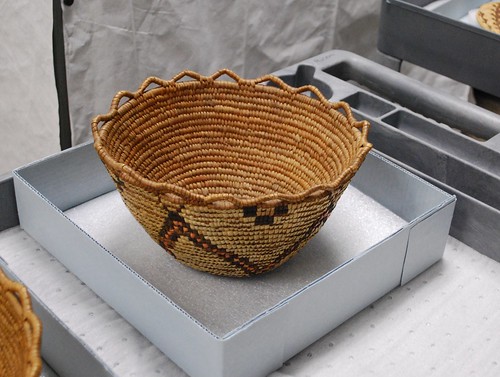
This flat bottomed basket is very stable as it is. A handling tray lined with ethafoam prevents sliding and accidental bumping into other baskets on shelves.

This unique piece was too nearly flat for the sort of carved supports which worked best for other items, but small bumpers made of ethafoam tube cut length wise was just about perfect for supporting the basket and preventing movement in the box.
Some pieces, however, proved too difficult to build a mount for in the limited class time dedicated to the project and stop-gap measures were put in place.

The ring at the base of this basket prevents the basket from shifting in the box and more equally distributes the stress at the base, but does nothing to alleviate warping that may already be occurring due to gravity. This basket will receive further attention before going back into storage.
Through this assignment, 16 baskets from the collection were thoroughly documented and now have housing which will protect them for years to come. Additionally, 16 museum studies students now have the experience of creating a custom storage mount for important museum objects. I declare that to be a success all around.
